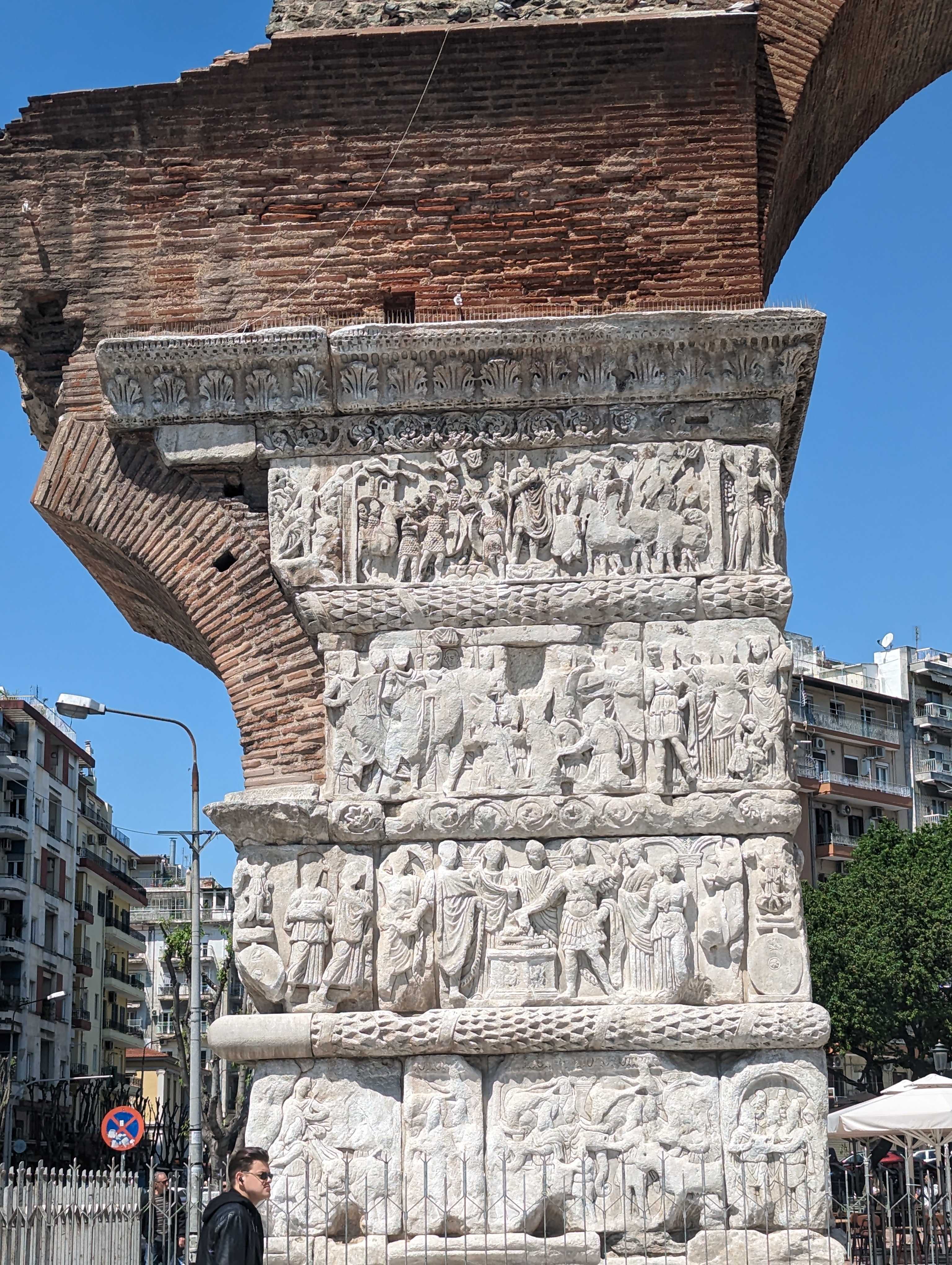The Triumphal Arch of Thessaloniki, also known as Kamara, is a historic monument in the city of Thessaloniki. The arch was built by the city of Thessaloniki between 298 and 305 A.D. to commemorate Galerius' victorious campaign against the Persians. It is a typical example of Roman architecture, known as a triumphal arch.
The arch was originally constructed with eight piers arranged in two parallel rows, with three arched openings between the piers. The central opening was wider and higher than the other two. The four central piers, which carried marble slabs with relief decoration, were larger than the outer piers and were connected by semi-circular arches supporting a dome.
Today, only three of the original eight piers are preserved. You can see where the central piers on the east were destroyed from the pavement of Egnatia Street by the different paving. Two of the preserved piers carry reliefs depicting scenes from the Romans' victorious campaigns against the Persians in 297 A.D., in addition to symbolic images persuading people of Galerius' military might and the Tetrarchy's power.
The triumphal arch was built at the intersection of two streets. One of these was the linear "processional way" with porticoes starting from the arch's north side and finishing at the south gate to the Rotunda's enclosure. The other was a main avenue, the Roman decumanus maximus, which traversed the city from west-east. This avenue passed directly between the main piers of the triumphal arch and ended up at the Kassandreotiki (Cassandrian) Gate in the eastern wall.
Directly abutting the smaller southern piers of the arch was a large rectangular vestibule, remains of which were found beneath the paving of Egnatia Street. The floor of the vestibule had a mosaic paving featuring geometric and vegetal motifs. There was an opening in its southern wall from which a monumental marble staircase began. According to some researchers, it led to a large city square through which one could enter the Hippodrome, which lay to its east.
South of the square, the "Apsidal Hall" of the complex was built. Today its remains are visible at the archaeological site on D. Gounari Street. The hall was originally an enclosed rectangular space with an apse at its east end. It is believed to have been used as a space for public gatherings, or as a reception area for important visitors to the city.
Overall, the Triumphal Arch of Thessaloniki is an important historical monument and a fine example of Roman architecture. Being at the intersection of two major streets in the ancient city, and next door to various other structures that were built around it, explains its importance and the central role it played in the life of the city during the Roman period.

- Monday:
- Open 24 Hours
- Tuesday:
- Open 24 Hours
- Wednesday:
- Open 24 Hours
- Thursday:
- Open 24 Hours
- Friday:
- Open 24 Hours
- Saturday:
- Open 24 Hours
- Sunday:
- Open 24 Hours




